Here you can sort, search & filter the selected writings and In/Site posts included on my site:
| image | Title | Publication | Publish Date | Type | Topics | Excerpt |
|---|---|---|---|---|---|---|
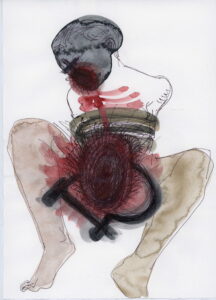 | Interview with Monika Fabijanska: Women at war | ARTMargins Online | Oct 2023 | Article | Contemporary East European art, Featured, Feminism, Interview, Monika Fabijanka | Women at War gathers the works of twelve Ukrainian artists who employ a variety of media to address the Russian war against Ukraine, from its beginning in 2014 to the full-scale invasion in February 2022, through the lens of gendered experience. The exhibition explores the struggle for Ukrainian independence and women’s equality against the backdrop of the war and its impact on both the national and individual psyche while giving voice to women as narrators of history and agents of change. Curated by Monika Fabijanska, Women at War premiered at Fridman Gallery, New York, in the summer of 2022, and continues its North American tour through 2025.(1) I recently spoke with Fabijanska, known for her critically acclaimed exhibitions focusing on women and women’s art, about the challenges of organizing an exhibition about war alongside the show’s many themes of loss and resiliency, national identity, and feminism. |
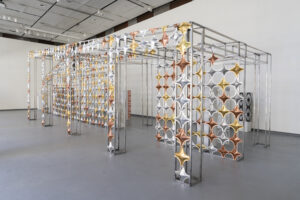 | Edra Soto, Destination/El Destino: A Decade of GRAFT | Artforum | Oct 2023 | Article | Edra Soto, Featured, Graft | For Chicago-based, Puerto Rican–born artist Edra Soto, home is a psychic, geographic place as well as a locus for gathering and community. It is also a political space that defines who we are as civic and social beings. The complex relationships between citizenship and migration, displacement and belonging, inform the impressive suite of sculptural installations comprising “Destination/El Destino: A Decade of GRAFT,” an unconventional survey celebrating ten years of this ongoing project by Soto. |
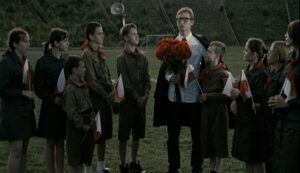 | Yael Bartana at the Gene Siskel Film Center | ARTMargins Online | Jun 2011 | Article | Film and video, Israel, Poland, Yael Bartana | Yael Bartana infuses all her works with tensions and contradictions, blending fact and fiction, past and present to question cultural definitions of nationhood and identity. These issues play out in an epic style that draws from traditional documentary, socialist-realist propaganda and the artist’s self-scripted narratives. |
 | Uta Barth | Art in America | Nov 2011 | Article | Uta Barth | In her new series, “ . . . and to draw a bright white line with light” (2011), created specifically for her show at the Art Institute of Chicago, Uta Barth continues her exploration of the nature of seeing, offering atmospheric tableaux that challenge our perceptions of the physical world. |
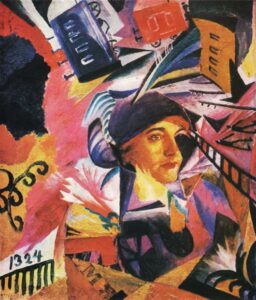 | Ukrainian Modernism: Identity, Nationhood, Then and Now | ARTMargins Online | Apr 2007 | Panel | Modernism, Ukraine | The following is a transcription of “Ukrainian Modernism: Identity, Nationhood, Then and Now,” a panel discussion organized by and held at the Chicago Cultural Center in conjunction with the exhibition Crossroads: Modernism in Ukraine, 1910-1930, on view at the Chicago Cultural Center, July 22-October 15, 2006, and The Ukrainian Museum, New York, November 5, 2006-April 29, 2007. |
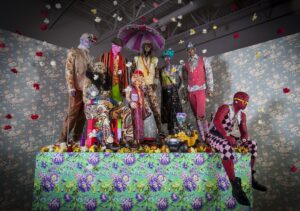 | Toward Textiles | Textile: Cloth and Culture | Jan 2016 | Article | Mixed-media installations, Textiles | Toward Textiles sets out to reclaim fiber art from disciplines of mainstream contemporary art that have appropriated, and perhaps misappropriated, material-based practices. As such, it attempts to deliver fiber art back to the realm of the physical and the experiential. |
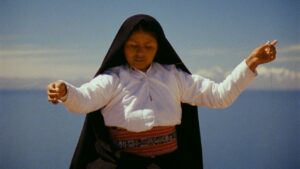 | Thread Lines | Textile: Cloth and Culture | May 2016 | Article | Anne Wilson, Feminism, Painting and drawing, Textiles | Thread Lines, with its impressive roster of artists, offered a first take on the relationship between fiber art and drawing. |
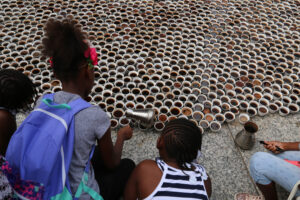 | ŠTO TE NEMA – A Living Monument: An Interview with Aida Šehović | ARTMargins Online | Nov 2021 | Article | Aida Šehović, Featured, Interview, New public monuments in Eastern Europe, Srebrenica genocide, ŠTO TE NEMA (Where have you been?) | ŠTO TE NEMA (Where have you been?) by Bosnian-born artist Aida Šehović is an annual nomadic monument to the victims of the 1995 Srebrenica genocide that has traveled internationally to 15 different cities from 2006 to 2020. This participatory public monument, consisting of more than 8,372 fildžani (small porcelain coffee cups) that have been collected and donated by Bosnian families from all over the world, addresses issues of trauma, healing, and remembrance. |
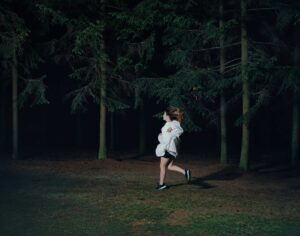 | Sharon Lockhart: Rudzienko | The Seen | Sep 2016 | Article | Photography, Poland, Sharon Lockhart | Compassionate is Lockhart’s immersive practice and commitment to her subjects, here the young women of Rudzienko’s Youth Center for Socio-Therapy, a boarding school for troubled girls, including Milena, whose longstanding friendship with the artist is the impetus for the works on view. |
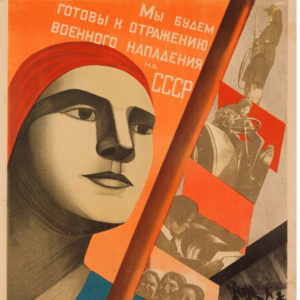 | Revolution Redo | ARTMargins Online | Apr 2018 | Article | Cauleen Smith, Constructivism, Revoliutsiia! Demonstratsiia! Soviet Art Put to the Test, Revolution Every Day, Socialist Realism, Soviet art | At a time when our own political moment has given rise to dangerous neoliberalism and right-wing nationalism across Europe and the United States, Revolutionary Russia of a century ago with its promise of social equality and transformation continues to seduce our imagination (at least in the former West), despite the ultimate failure of the Soviet project. This seduction fueled two recent shows in Chicago that marked the centennial of the October Revolution through the art, design and material culture of its artists and social architects. |
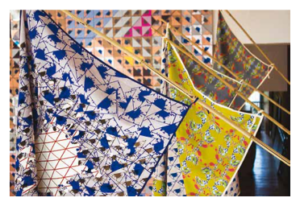 | Remote Central: Future Force Geo Speculators | Textile: Cloth and Culture | May 2015 | Article | Carol Frances Lung, Christine Tarkowski, Ellen Rothenberg, Feminism, Mixed-media installations, Textiles | Hardline feminism and cottage industry craft, in particular textiles, are employed or rather deployed throughout the works on view, installed en masse to emulate a makeshift agora or meeting space that exists in a not-so-distant future. |
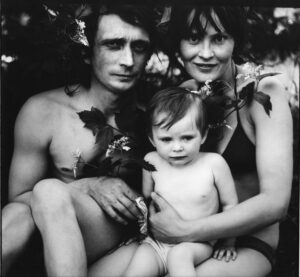 | Ostalgia at the New Museum | ARTMargins Online | Dec 2011 | Article | Contemporary East European art, Nostalgia | Shunning distinct geographical, temporal, even thematic delineations, Ostalgia presents viewers with an idiosyncratic and intentionally fragmentary portrait, or rather series of portraits, of life under socialist domination. At its heart is the role of the artist – and art –within and in response to this political condition, a position of both resistance and preservation. |
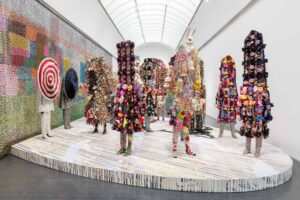 | Nick Cave: Forothermore | Textile: Cloth and Culture | Nov 2022 | Article | Featured, Mixed-media installations, Nick Cave, Soundsuits, Textiles | At once a celebration of beauty in all its opulence and material forms, Nick Cave’s Forothermore, the artist’s largest museum survey to date, is also a eulogy to Black lives lost to police violence and those harmed by societal bigotry and racism. |
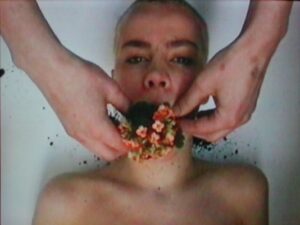 | New Video, New Europe | ARTMargins Online | Jun 2004 | Article | Contemporary East European art, Film and video, Video installations | One learns in “New Video, New Europe” that the video artist in East Central Europe is both a provocateur and a scribe, a witness to history whose own interventions speak of moral responsibility and redefinitions of self. |
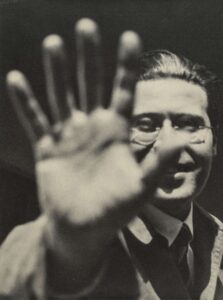 | Moholy-Nagy: Future Present | ARTMargins Online | Mar 2017 | Article | Bauhaus, Constructivism, Modernism, Moholy Nagy, New Bauhaus, Photography | Moholy-Nagy: Future Present, the long overdue traveling retrospective of Hungarian-born artist and educator László Moholy-Nagy, is a timely testament to an artistic practice that was truly interdisciplinary, spanning seemingly every medium and ism, and to an aesthetic vision that saw the creative potential in every citizen. |
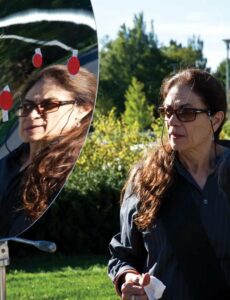 | Mary Miss Goes with the Flow | Art in America | Sep 2011 | Article | Mary Miss | Pioneering public artist Mary Miss unveiled FLOW: Can You See the River? in Indianapolis, the first in the artist’s City as Living Laboratory (CaLL) series of projects that combine art and environmentalism to raise public awareness about issues of sustainability |
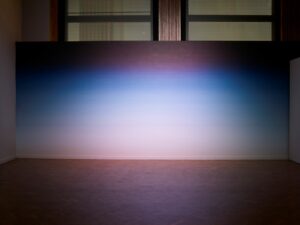 | Luftwerk: Exact Dutch Yellow | Artforum | Apr 2023 | Article | color theory, Featured, Josef Albers, Light installations, Luftwerk | “Color is the most relative medium in art,” according to Josef Albers. Its relativity, along with the subjective nature of visual perception, forms the basis of the immersive light installations that comprise “Exact Dutch Yellow,” the most recent exhibition of Chicago-based collaborative Luftwerk (Petra Bachmaier and Sean Gallero), who transformed the fourth-floor galleries of this cultural institution into an oasis of complex optical phenomena. |
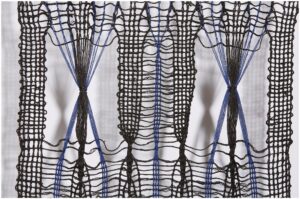 | Lenore Tawney: Mirror of the Universe | Textile: Cloth and Culture | Apr 2020 | Article | Featured, Lenore Tawney, Mixed-media installations, Textiles | Revealed throughout Mirror of the Universe, a suite of four exhibitions recently on view at the John Michael Kohler Arts Center exploring the life, work, and influence of Lenore Tawney (1907–2007), is an artist whose creative and everyday lives were intimately intertwined. |
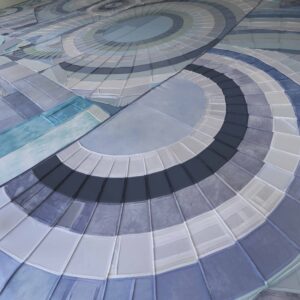 | Karen Reimer: Shoretime, Spaceline | Textile: Cloth and Culture | Mar 2017 | Article | Karen Reimer, Labor, Mixed-media installations, Textiles | In her installation Shoretime Spaceline (2016), Karen Reimer distorts our perceptions of space and time: the sky becomes the sea, the sea becomes the sky, the present and past combine. |
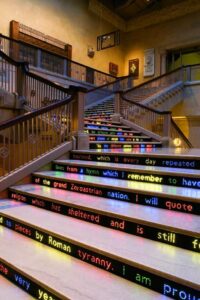 | Jitish Kallat | Art in America | Nov 2010 | Article | Jittish Kallat | Public Notice 3, a text-based installation conceived for the Grand Staircase of the Art Institute of Chicago by Jitish Kallat, is truly monumental in aim. The site-specific work engages the historical and cultural conditions of its locale, connecting past and present in a powerful statement about religious tolerance and fanaticism. |
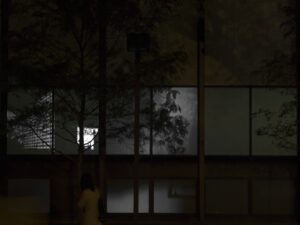 | Jan Tichy: Light Source | ARTMargins Online | Jan 2013 | Article | Jan Tichy, Light installations, Moholy Nagy | At the core of Jan Tichy’s multimedia practice is an investigation of the protean and plastic properties of light, an exploration grounded in the history of photography and by extension film and video. For Tichy, light is a medium of infinite possibility and a means for making visible the hidden histories of his chosen sites, whether a traditional gallery, a public housing complex, or a museum collection. |
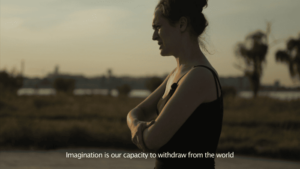 | Irina Botea: “It is now a matter of learning hope” | ARTMargins Online | Aug 2014 | Article | Irina Botea, Re-enactment, Video installations | Throughout her practice that spans video, film, performance and installation, Irina Botea appropriates the instruments of mediation that shape the politics of memory to reconfigure the way history frames our contemporary consciousness. |
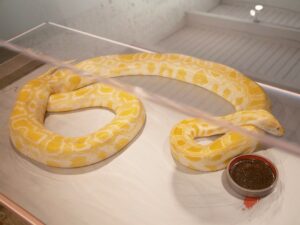 | Irena Knezevic | Art in America | May 2013 | Article | Irena Knezevic | The evocative works in Irena Knezevic’s exhibition “Night of the World” belie the horrifying narrative from which they unfold. |
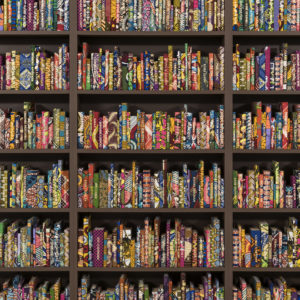 | From the Front | The Seen | Sep 2018 | Article | Featured, FRONT International: Cleveland Triennial for Contemporary Art | An American City, the inaugural edition of FRONT International: Cleveland Triennial for Contemporary Art, is an experiment in urban development: a cultural laboratory that hopes to reshape the image of this post-industrial city by positioning itself as a “heartland documenta.” |
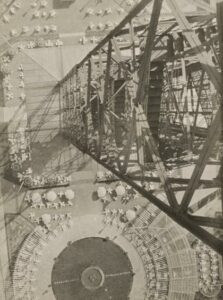 | Foto: Modernity in Central Europe, 1918-1945 | ARTMargins Online | Apr 2008 | Article | Central Europe, Modernism, Photography | Captured throughout the exhibition is the dual sense of hope and despair that infused these countries during the interwar period, as is the political and social upheaval that spawned artists to craft a new vision for Europe. |
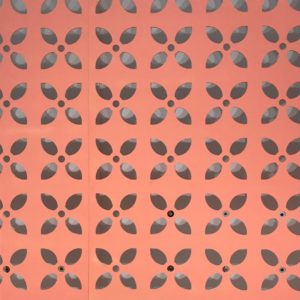 | Forgotten Forms | The Seen | Apr 2019 | Article | Architecture, Edra Soto, Featured, Mixed-media installations, Yhelena Hall | The exhibition Forgotten Forms at the Chicago Cultural Center pairs the works of Edra Soto and Yhelena Hall, whose transformations of architectural elements of the everyday interrogate narratives of place to configure new urban landscapes marked by traces of memory. |
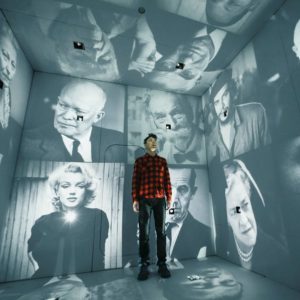 | Enter the Matrix: Interview with Ken Isaacs | Hippie Modernism: The Struggle for Utopia | Nov 2015 | Book/Catalog Essay | Architecture, DIY design, Environmentalism, Interview, Ken Isaacs, Modernism | The following interview is a composite dialogue, a textual collage that combines passages from a conversation between designer and architect Ken Isaacs and myself that took place on September 9, 2014, in Granger, Indiana, and excerpts from the Isaacs's own writings and other interviews. |
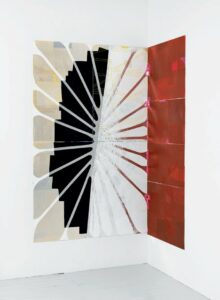 | Dianna Frid | Art in America | Feb 2012 | Article | Dianna Frid | Dianna Frid constructs sculptures, artist’s books and wall-based assemblages that attempt to give new form to natural phenomena, whether earthly or celestial, concrete or ethereal, as suggested by the title of her recent solo exhibition “Evidence of the Material World.” |
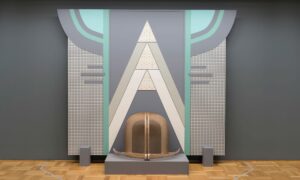 | Diane Simpson: House Images | The Seen | May 2017 | Article | Architecture, Diane Simpson, Mixed-media installations, Textiles | Both the work and the viewer are caught within a subtle warp of spatial dislocation, whereby two dimensions unfurl into three, and three dimensions fold into flatness. |
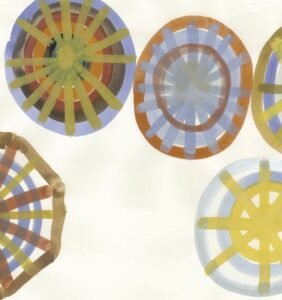 | Deborah Boardman: A Porous Space | A Porous Space | Jan 2010 | Book/Catalog Essay | Deborah Boardman, Mixed-media installations, Painting and drawing | Like Robert Smithson's Spiral Jetty, Deborah Boardman's generous art looks to the self-governing forces of nature creating synergies between human experience and natural phenomena. |
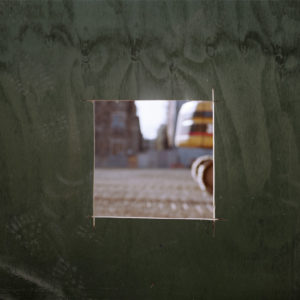 | Dawoud Bey: Visualizing Memory | The Seen | Apr 2018 | Article | Dawoud Bey, FRONT International: Cleveland Triennial for Contemporary Art, Harlem, Photography, Underground Railroad | Whether working on the street, in the studio, or in residence with communities, Dawoud Bey imbues his subjects with a psychological presence, while also challenging the formal traditions of photographic representation. |
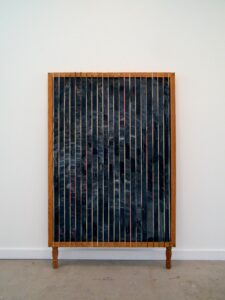 | Dan Gunn | Art in America | Nov 2011 | Article | Dan Gunn | Dan Gunn’s hybrid constructions, whether freestanding or wall-mounted, retain their indebtedness to the history of abstract painting at the same time that they embrace other mediums and disciplines, including sculpture and design. |
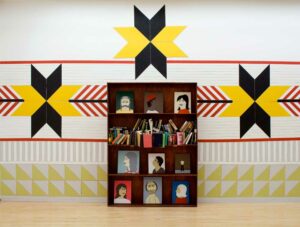 | Clare E. Rojas | Art in America | Oct 2009 | Article | Clare E. Rojas | San Francisco-based artist, filmmaker and musician Clare E. Rojas spins allegorical tales in intimate paintings, large-scale murals and installations. Deriving motifs from quilts, Russian nesting dolls and Native American art, these works combine geometric patterns, personal iconography and folkloric tableaux. |
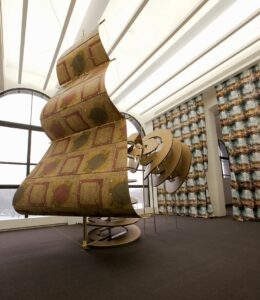 | Christine Tarkowski | Art in America | Sep 2010 | Article | Christine Tarkowski | Christine Tarkowski set out to construct her own system of belief in “Last Things Will Be First and First Things Will Be Last,” the 42-year-old’s largest, most ambitious exhibition to date. |
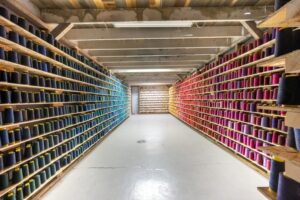 | Chris Larson: The Residue of Labor | Textile: Cloth and Culture | Nov 2022 | Article | Chris Larson, Featured, Labor, Mixed-media installations, Textiles | Shunning mere esthetic representations of industrial ruin, the strength of Chris Larson’s project is the artist’s deep engagement with the material conditions of the factory itself—from its textile remnants to its architecture to its deserted machinery—and with the residual traces of human labor that such objects bear. |
| Central and East European Art and Culture, 1945-Present | ARTMargins Online | Oct 2001 | Panel | Contemporary East European art, Modernism, Panel | The following roundtable concluded a panel devoted to contemporary and art historical perspectives on central and East European art and culture from 1945 to the present at the 2001 College Art Association Conference. | |
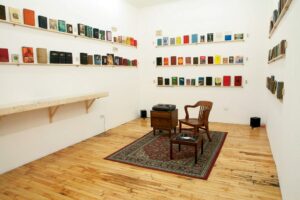 | Cauleen Smith | Art in America | Dec 2012 | Article | Cauleen Smith | San Diego filmmaker Cauleen Smith began her artistic journey into the life and legacy of experimental jazz musician Sun Ra during a 2010 residency at Threewalls, and the odyssey recently culminated in two powerful exhibitions (all work 2012) that pay homage to both her subject and Chicago, where Sun Ra lived from 1945 to 1961. |
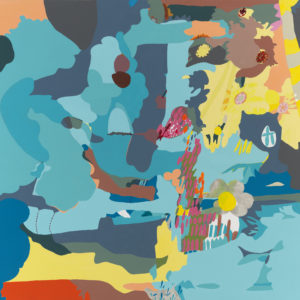 | Candida Alvarez: Arriving Here | The Seen | Sep 2017 | Article | Candida Alvarez, Painting and drawing | Painter Candida Alvarez is a storyteller who maps narratives of place, both the interior landscape of the self and the external world with its cacophony of colors, sounds, and images from which she endlessly samples and draws. |
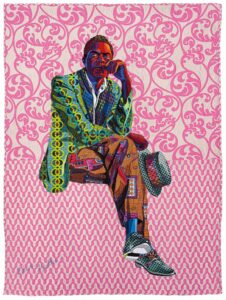 | Bisa Butler: Portraits | Textile: Cloth and Culture | Aug 2021 | Article | Bisa Butler, Featured, Photography, Textiles | The subjects who populate the 22 quilts that comprise Bisa Butler’s exhibition Portraits transcend their historical sources–vintage photographs of anonymous African Americans, whose visages Butler transforms through vibrant layers of fabric and thread. |
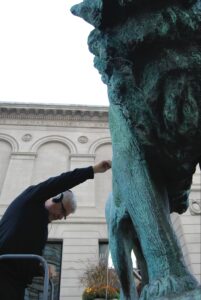 | Bill Fontana: Soaring Echoes | SoundSculpture | Jan 2012 | Book/Catalog Essay | Bill Fontana, Millennium Park, Sound installations | Soaring Echoes, a new sonic sculpture created by Bill Fontana for the Pritzker Pavilion at Chicago’s Millennium Park, dislocates then relocates the viewer within its host environment, transforming perceptions of time and space. |
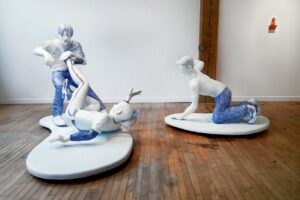 | Ben Stone | Art in America | Jan 2011 | Article | Ben Stone | Claes Oldenburg’s statement “I am for an art that imitates the human, that is comic . . . or violent, or whatever is necessary” can readily be applied to the art of Ben Stone, whose six recent works explore pathos in contemporary American life, particularly as manifested by tragi-comic characters in his native Chicago. |
| Bad at Sports: EXPO Chicago Roundtable | Bad at Sports | Oct 2018 | Podcast | Art fair, EXPO Chicago | KT Hawbaker and Susan Snodgrass join the cast of Bad at Sports Center for an epic EXPO breakdown. | |
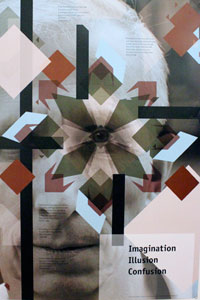 | ARTMargins: Voices from the Center | ARTMargins Online | Oct 2011 | Podcast | Interview, Janeil Engelstad, Voices from the Center | The following podcast took place on October 30, 2011, on the occasion of the exhibition Voices from the Center at threewalls gallery in Chicago, October 28 – December 10, 2011. The exhibition is an extension of a series of interviews with those living in Eastern Europe about life during and after communism by artist and curator Janeil Engelstad, beginning in 2006. |
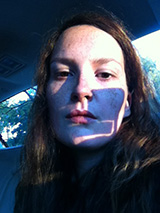 | ARTMargins: Interview with Irena Knezevic | ARTMargins Online | Jan 2013 | Podcast | Interview, Irena Knezevic, Serbia | Irena Knezevic (born Serbia, 1982) is an artist who works in various media, including prints, ceramics, sculpture, video, music, and architecture. Her work often addresses issues related to the political and cultural history of her native Serbia. |
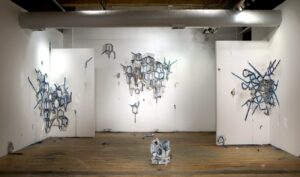 | Armita Rafaat | Art in America | Mar 2010 | Article | Armita Raafat | Chicago-based Armita Raafat performs an archeology of memory in evocative mixed-medium installations that draw on architectural motifs from Iran, the country of her familial roots. |
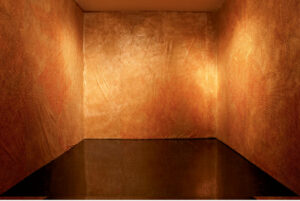 | Antonio Gurkovska | Art in America | May 2012 | Article | Antonio Gurkovska | As suggested by the exhibition’s title, Antonia Gurkovska (b. 1984, Bulgaria) presented a lexicon of painting in her first solo show, “Index.” |
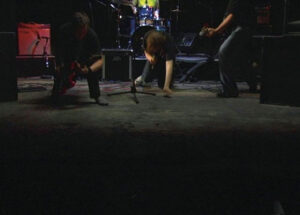 | Anri Sala, “Now I See,” at the Art Institute of Chicago | ARTMargins Online | Feb 2005 | Article | Albania, Anri Sala, Film and video | Upon entering the installation of Anri Sala’s Now I see (2004), his first 35-mm film, the viewer is enveloped in total darkness. The effect is, at first, purposefully disorienting; then a flicker of light flashes upon a 10 x 12-foot screen. |
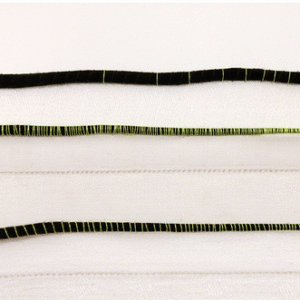 | Anne Wilson: a hand well trained | Textile: Cloth and Culture | Jan 2018 | Article | Anne Wilson, Feminism, Labor, Textiles | Throughout her prodigious work, Anne Wilson employs human hair and found cloth (damask fabrics, table linens, family heirlooms, remnants of clothing), as stand-ins for the body and as fragments of memory imbued with their own personal and collective histories. |
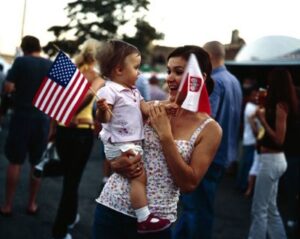 | Allan Sekula: Polonia and Other Fables | ARTMargins Online | Dec 2009 | Article | Allan Sekula, Photography, Poland | The forty photographs that comprised Allan Sekula's exhibition Polonia and Other Fables explore aspects of Polish identity that lie somewhere between reality and myth, between Poland and the Polish diaspora. |
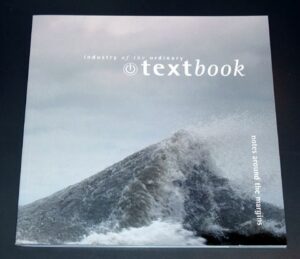 | Acting Ordinarily | Industry of the Ordinary Text Book: Notes Around the Margins | Jan 2005 | Book/Catalog Essay | Industry of the Ordinary | Like Nauman, who gave privilege to the everyday in his early performance pieces in which he would simply record the mundane activities of, for example, pacing in his studio, Industry of the Ordinary “challenge pejorative notions of the ordinary,” as proclaimed in their manifesto, in order to reveal the unexpected in both art and life. |
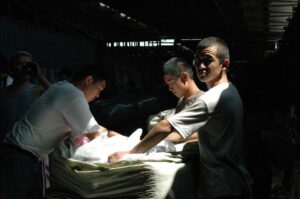 | A New Silk Road: Algorithm of Survival and Hope | ARTMargins Online | Jun 2007 | Article | Gulnara Kasmalieva and Muratbek Djumaliev, Kyrgyzstan, Photography, Video installations | In the photographs and video installations of Gulnara Kasmalieva and Muratbek Djumaliev, the diversity of Kyrgyz identity is examined against the backdrop of a complex, layered history that includes nomadic traditions based in pastoralism followed by centuries of colonist rule. |
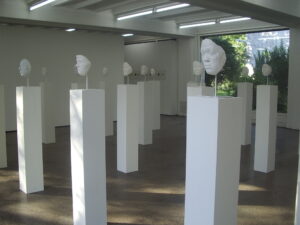 | A Counter-Monument to Female Victims of Wartime Rape: An Interview with Edit András | ARTMargins Online | Dec 2021 | Article | Edit Andras, Featured, Interview, Memory of Rape in Wartimes: Women as Victims of Sexual Violence, New public monuments in Eastern Europe | A new memorial project in Budapest, Memory of Rape in Wartimes: Women as Victims of Sexual Violence, will commemorate female victims of wartime rape, while establishing a culture of dialogue around rape and violence in Hungarian society and the region. In the following interview, art historian and critic Edit András discusses the origins of the memorial, the process for vetting proposals, and how contemporary public memorials to collective trauma should be conceived. |
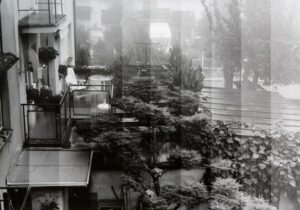 | 50% Grey: Contemporary Czech Photography Reconsidered | ARTMargins Online | May 2010 | Article | Contemporary East European art, Photography | Despite the art historical links suggested, the exhibition 50% Grey: Contemporary Czech Photography Reconsiderd is not a portrait of national identity. Rather the exhibition places current Czech photography between past and present, as a means for engaging both artist and viewer in zones of productive flux. |
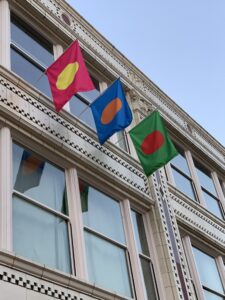 | Flag Art: Raising New Symbols of Belonging | In/Site | Nov 2020 | In/Site Post | Flags by artists, Protest art, Public art | As the end to a most trying year draws near, hopes for a fairer and more equitable future are weighted against the injustices of the present that attempt to erode the very foundations of our democracy. Even in the wake of the U.S. election’s positive outcome, conservative politicians and right-wing extremists, cloaked in the guise of patriotism, continue to exploit symbols of freedom, including the American flag, to bolster a dangerous authoritarian nationalism and commit atrocities against American citizens, immigrants, indigenous peoples, and Earth. |
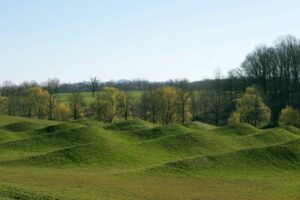 | Art and Nature Parks: On Common Ground | In/Site | Jul 2020 | In/Site Post | Art and Nature Parks, Environmental art practices, Laumeier Sculpture Park, Newfields, Outdoor sculpture, Public art, Site-specific installations, Storm King Art Center | Walking in the Eastern Woodlands of the Laumeier Sculpture Park in St. Louis, one discovers an open clearing in which lies a large concrete basin surrounded by a skeletal wooden structure all weathered by the forces of nature and time. The central pond-shaped form, cracked and empty save for a few fallen leaves, was once a swimming pool on a 20-acre estate uncovered by Laumeier staff when it acquired the land in the early 1980s. The trellised structure, a labyrinth of elevated walkways and gazebos, is an installation by artist Mary Miss who constructed the work in 1982-85. |
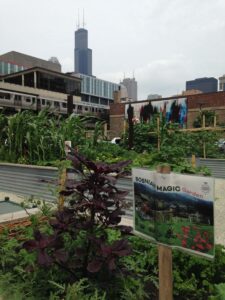 | Planting the Future City | In/Site | Apr 2020 | In/Site Post | Agnes Denes, Environmental art, Frances Whitehead, Melissa Potter, Nance Klehm, Sara Black, urban agriculture | As I have mentioned many times here and throughout my critical practice, Rosalyn Deutsche’s book Evictions: Art and Spatial Politics has been an endless source of inspiration for me. Deutsche centers her discourse on public art in political reinventions of public space, looking to radical definitions of democracy and to analogies that equate cities with biological systems. Such analogies are even more prescient given our current pandemic that heightens the realities of the interconnectedness of humans, cities, and ecosystems and the social, economic, and environmental injustices that result when those links are destabilized. |
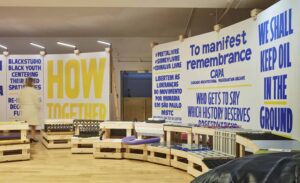 | For the Common Good: Chicago Architecture Biennial's ". . .and other such stories" | In/Site | Jan 2020 | In/Site Post | Chicago Architecture Biennial, Commoning, Social architecture | Just ending its 14-week run that coincided with the rise of global anti-government protests, the Chicago Teachers Strike, and devasting fires in Australia, this year’s iteration of the Chicago Architecture Biennial (CAB) offered a platform for projects, many collaborative and citizen-led, that explored the social function of architecture and its publics. Titled “. . . and other such stories,” the biennial took an activist approach to architecture and urban transformation using the Chicago Cultural Center and various satellite spaces as sites for alternative investigations of how we might shape and inhabit the world. |
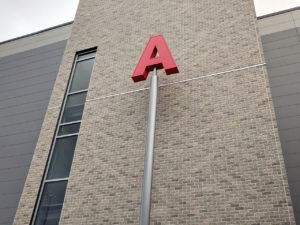 | Mapping the Waterways of Milwaukee with Mary Miss | In/Site | Oct 2019 | In/Site Post | Mary Miss, Milwaukee, WaterMarks | With the goal to help the citizens of Milwaukee learn about the importance of water to the life of their city, artist Mary Miss has embarked on WaterMarks: An Atlas of Water for the City of Milwaukee, a multi-year project that fosters community and municipal partnerships to create public awareness around climate change. |
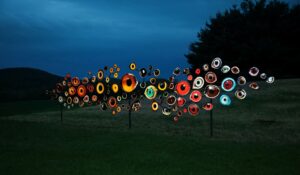 | For the Birds: Reimagining the Future with Jenny Kendler | In/Site | Aug 2019 | In/Site Post | Chicago is part of the Mississippi Flyway zone, one of the largest bird migration corridors in North America. It follows the Mississippi River some 2,500 miles from its most northern point in Minnesota southwards to the Gulf of Mexico. According to the Audubon Society, more than 325 bird species use the Mississippi Flyway. Growing up in the Midwest, these migratory patterns always defined the seasons: dark flocks flew south for winter; warbling swarms returned each spring. | |
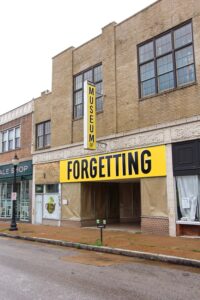 | Public Encounters in St. Louis | In/Site | Jul 2019 | In/Site Post | Counterpublic, Public art, St. Louis, The Luminary | What is a public? According to theorist Michael Warner, “a public is understood to be an ongoing space of encounter for discourse,” a self-defined social space of dialogic interactions and interplays. For Warner, a counterpublic is similarly discursive but assumes a “conflictual relation to the dominant public,” by creating its own audiences and idioms through alternative forms of address. (1) The idea of the “discursive public” forms the basis for Counterpublic, a new art triennial that reclaims the spatial environment of St. Louis as a body of distinct yet overlapping publics, each with their own cultural identity. |
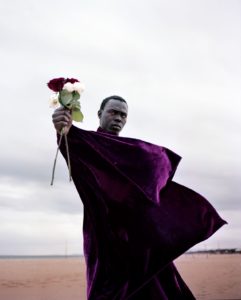 | To Belong: Narratives on Citizenship and Migration | In/Site | May 2019 | In/Site Post | Loss takes many forms. Within the last two years, I lost both my parents and a sister. Their passings were followed by much personal grief, of course, as well as an existential rethinking about the meaning of absence and belonging. What binds us to place, to each other, to the larger world? And while loss is inherent to the cycles of life that define who we are as human beings, catastrophic loss – whether by violence, poverty, social oppression, climate change, or environmental disaster – plagues our political present, rupturing the ties that connect us to home and to the earth beneath our feet. | |
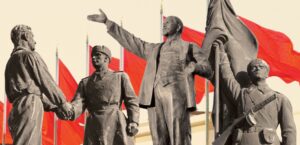 | On Monuments | In/Site | May 2018 | In/Site Post | Krzysztof Wodiczko, Monuments | It has been less than a year since violent hatred erupted on August 12, 2017 at a white nationalist rally in Charlottesville, Virginia, fueled by the planned removal of a bronze statue of Robert E. Lee from a public park. This horrific event has become the locus for the fiery debate about the fate of Confederate monuments, one that reignited some two years earlier when a self-identified white supremacist murdered nine black parishioners in a church in Charleston, South Carolina, triggering a wave of fallen Confederate statues throughout the American South. |
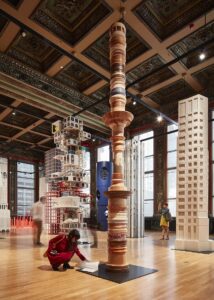 | In Search of a Future Present: The Chicago Architecture Biennial's Make New History | In/Site | Feb 2018 | In/Site Post | In her preface to The Death and Life of Great American Cities, urban advocate Jane Jacobs directs the reader to “look closely at real cities.” “The scenes that illustrate this book are all about us,” she writes. “While you are looking, you might as well also listen, linger and think about what you see.” (Note 1) I was reminded of Jacobs’s words with each viewing of Make New History, the second installment of the Chicago Architecture Biennial (CAB), which just closed its nearly four-month run this January. | |
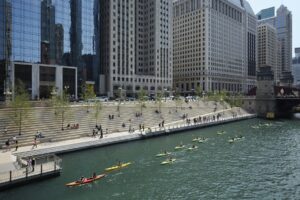 | To the River: More on the Art and Politics of Walking in the City | In/Site | Oct 2017 | In/Site Post | Chicago Riverwalk | As I consider Chicago’s new Riverwalk, I am reminded of Bob Dylan’s oft-covered song “Watching the River Flow,” in which the song’s protagonist, lonely and alienated within an unidentified city, finds solace sitting along the sandy banks of an unidentified river. The song’s themes of inspiration and displacement, fostered by clashes between public and private, urban and nature, seem an appropriate metaphor for the inherent issues embedded within urban renewal projects that repurpose former industrial sites, including riverfronts, into green spaces. |
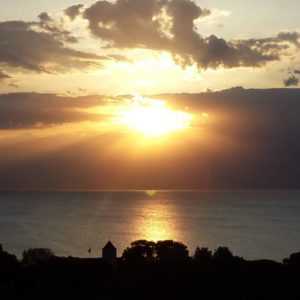 | Art and Ritual; Facebook and the Archive | In/Site | Aug 2017 | In/Site Post | A part of my morning ritual is to check in with Facebook. Each day I am greeted by a picture of a sunrise posted by artist Barbara Koenen, who photographs the sun ascending over Lake Michigan from her apartment window in Chicago. Using her smartphone, she then posts her images on Instagram and Facebook, where followers Like, Comment, and Share. I have followed Koenen’s sunrises daily since she initiated her project two years ago, and have come to find there is surprising variation in each dawn. | |
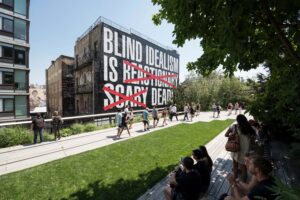 | I Walk the Line: On the Art and Politics of Walking in the City | In/Site | Dec 2016 | In/Site Post | The 606, The High Line | I walk a lot. I walk to get from one destination to another. I walk to clear a space in my head. I walk to connect to my neighborhood, to my city, and to those places less familiar. I have never been good at reading a map (or folding one), thus I often let my impressions and senses guide me, or when lost, ask others to point the way. There is a romance to walking, linked to our need to connect to nature and the physical environment, as well as our will to be alone. |
| Art. Criticism. Now. | In/Site | Nov 2016 | In/Site Post | As I am confronted with this blank page after the disastrous results of the election, I must admit I feel lost as to what I am supposed to do next. I can tell you how I feel; like others, I feel angry, betrayed, confused, afraid, but thankfully not alone. But now even those sentiments feel overused. There is a familiarity to this, not unlike the early aftermath of 9/11, when many of us in the art world questioned the importance of what we do and asked ourselves what is art’s role in times of uncertainty and struggle. | ||
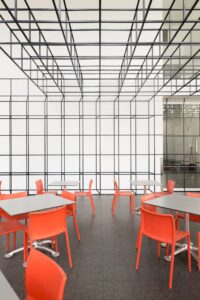 | The Chicago Architecture Biennial 2.0: Axes and Praxes | In/Site | Oct 2016 | In/Site Post | Chicago Architecture Biennial | The recent announcement of the new artistic team to lead the 2017 Chicago Architecture Biennial (CAB) has prompted me to consider some of the political dynamics at play and to share a few ideas about what I think the next installment of CAB could be. Sharon Johnston and Mark Lee of the Los Angeles-based firm Johnston Marklee are its Artistic Directors, following 2015’s Sarah Herda and Joseph Grima, with Todd Palmer, of Chicago’s National Public Housing Museum, as Executive Director. Johnston Marklee brings an insider’s perspective to the project both as a participant in the inaugural biennial and as practicing architects. |
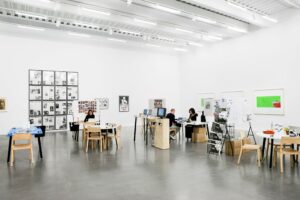 | Towards An Architectural Journalism | In/Site | May 2016 | In/Site Post | Alfredo Cramerotti’s book Aesthetic Journalism: How to Inform without Informing (2007) explores the relationship between contemporary art and documentary journalism, challenging established definitions of each. This blurring of the margins between art and journalism Cramerotti terms Aesthetic Journalism, a strain of contemporary art in which artists using the tools and methodologies of investigative journalism — archival and field research, interviewing, documentary and narrative storytelling, surveys, infographics and other display formats — offer alternative views of reality, political and otherwise, than those presented by mainstream media. | |
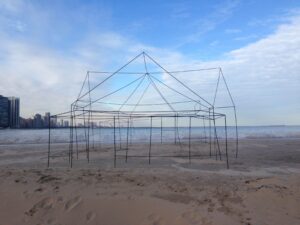 | Some Reflections on the Chicago Architecture Biennial | In/Site | Feb 2016 | In/Site Post | Chicago Architecture Biennial | The Chicago Architecture Biennial (CAB), the city’s first international survey of contemporary architecture, has come to a close. Writing this as a postscript, I am uncertain about what the impact of CAB is or what it really means; thus what follows are some reflections on those projects and issues that, in retrospect, still resonant with me. No doubt it was a coup for the city’s tourism and institutional players. According to press materials just released by CAB organizers, over a half-million visitors attended the biennial across its various sites, the main hub being the Chicago Cultural Center. |
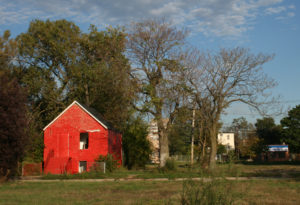 | Painting as Urban Archeology | In/Site | Aug 2015 | In/Site Post | Amanda Williams, Anri Sala, Art Institute of Chicago, Chicago, Gordon Matta Clark, Hungarian Cubes, Svetlana Boym | Although my critical practice has not been as deeply engaged with painting as other disciplines (albeit with some exceptions), I’ve been thinking a lot lately about its political potential outside of such lineages as History Painting (whether Delacroix or Kerry James Marshall) or the modern mural movement. Thus, I’ve been looking at painting projects that directly intervene into the contemporary social landscape – rather than represent it – performing an urban archeology that acts as a catalyst for change, while reinvesting the medium with political meaning. |
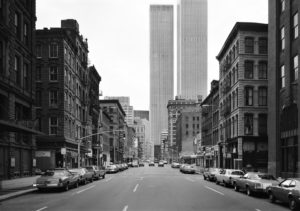 | The City Lost and Found | In/Site | Mar 2015 | In/Site Post | Art Institute of Chicago, Chicago | At a time when my own thoughts about what role art and artists play in meeting the challenges of contemporary urban life have been reawakened, the exhibition “City Lost & Found: Capturing New York, Chicago and Los Angeles, 1960-1980,” recently on view at the Art Institute of Chicago and now at the Princeton University Art Museum, seemed rather fortunate. This seminal piece of scholarship (curated by Katherine A. Bussard, Alison Fisher and Greg Foster-Rice) gathered images and documentary materials by artists, journalists, filmmakers, architects, and urban planners that together showed the convergence of creative ideas and urban practices that sought to transform these American cities during the political years of the sixties and seventies. |